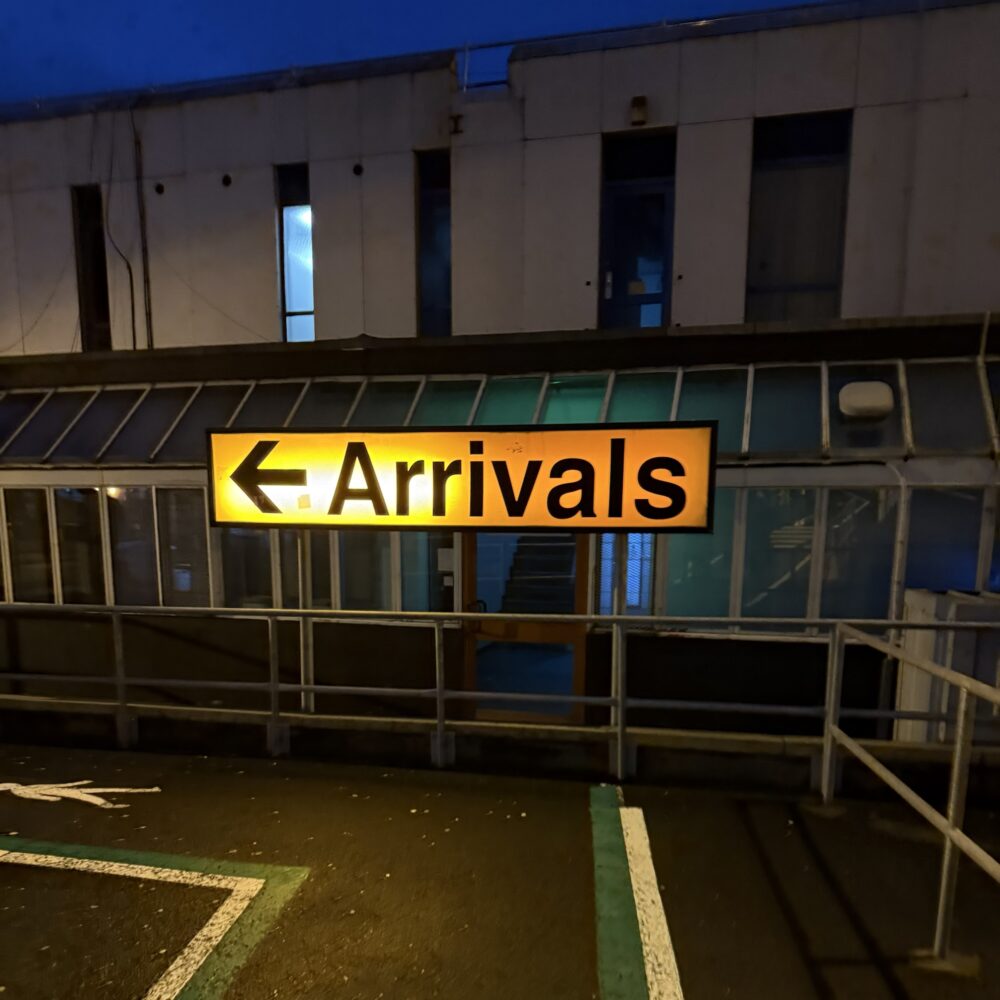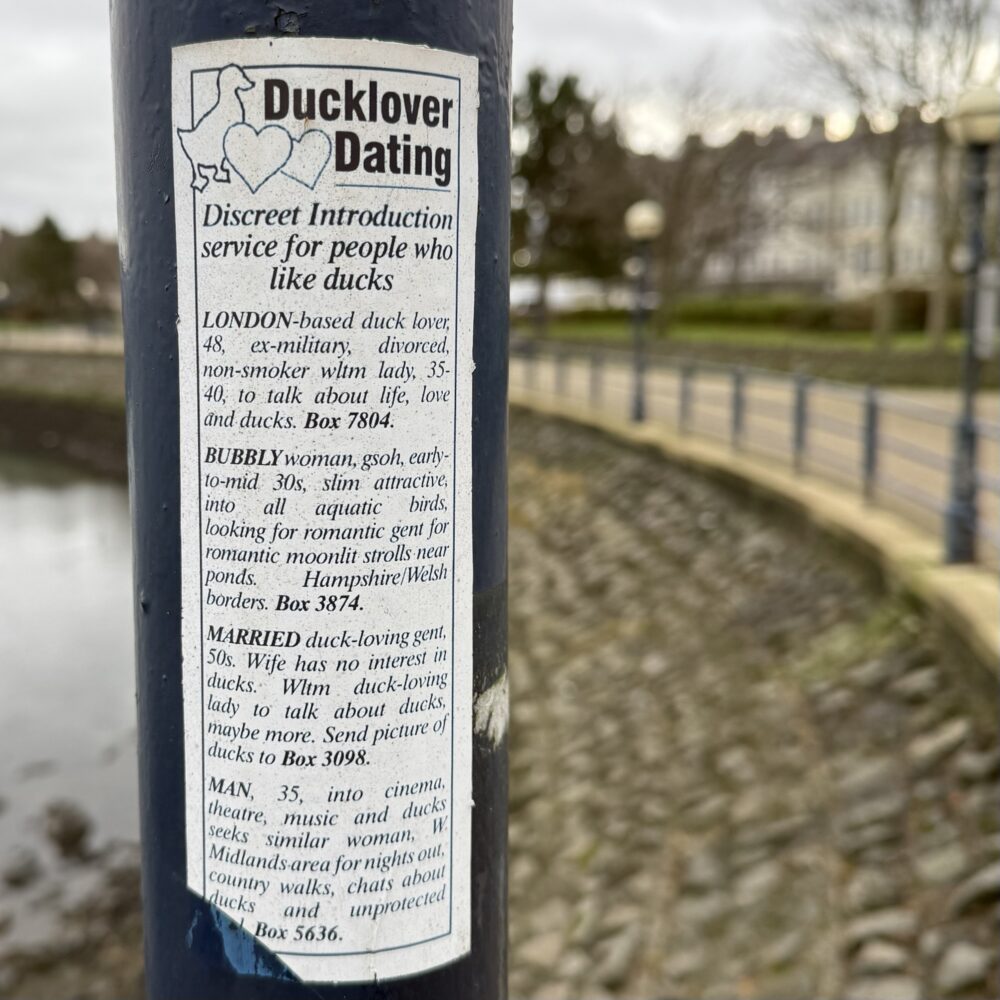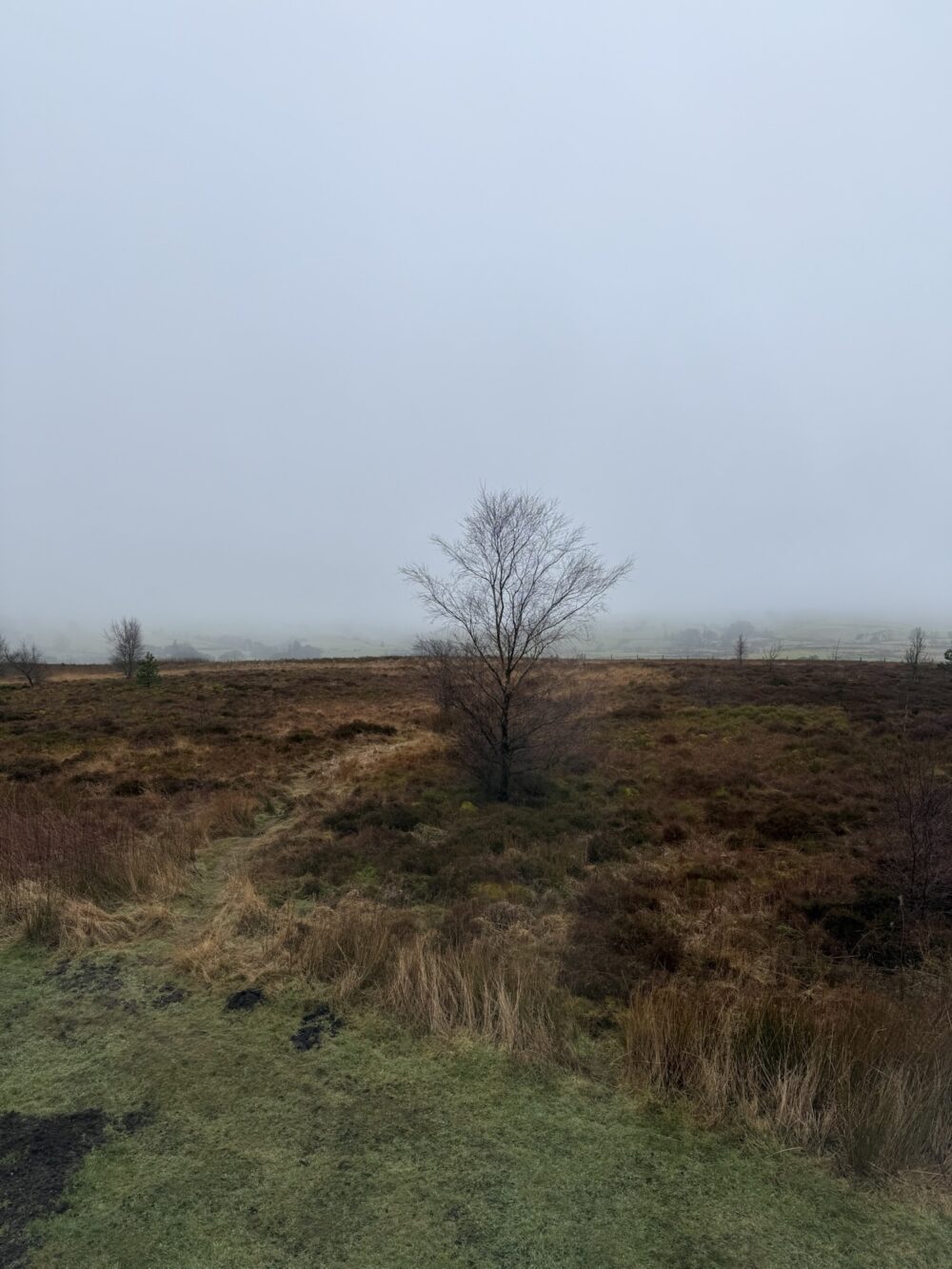
Cameron’s Brewery
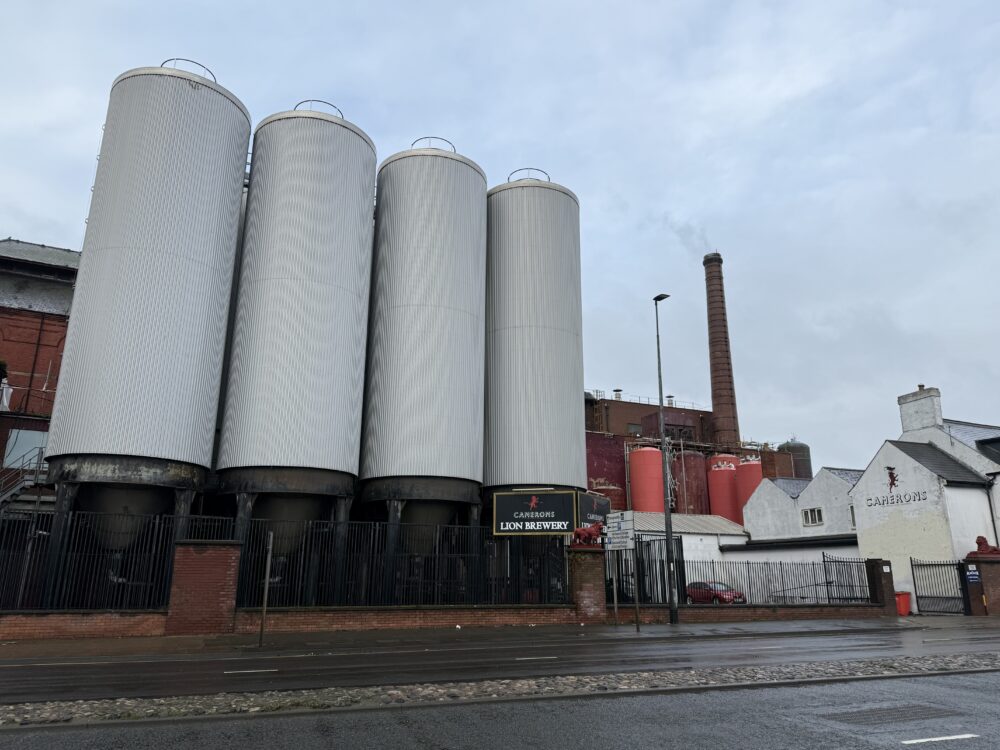
This is Cameron’s Brewery in Hartlepool, established 170 years ago—though the site has been used for brewing since 1572. It is the largest independent brewery in North East England.
This post was filed under: Photos, Travel, Hartlepool.
Blackfriars crafts
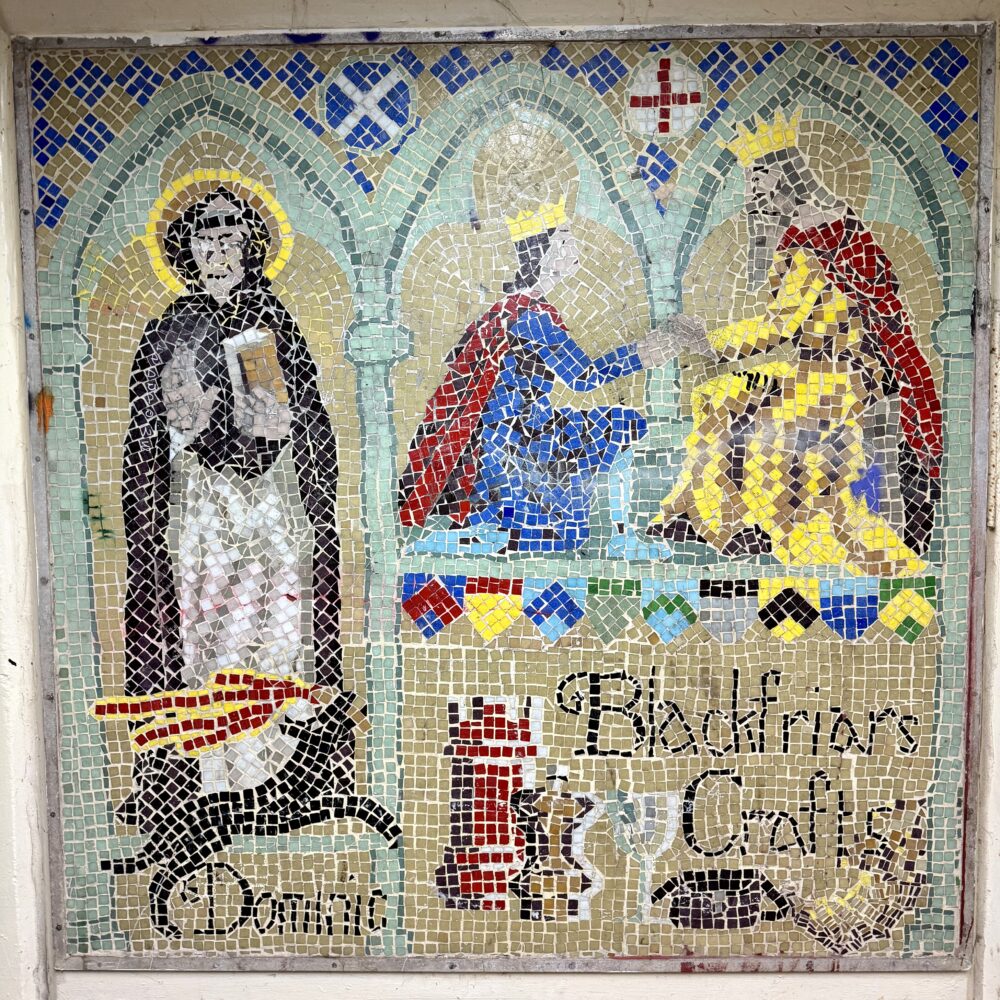
Dominican monks have a long history in Newcastle, with Blackfriars Priory established in 1239. The Friars wore black tunics over white cloaks, as shown in the mosaic, which eventually led to Newcastle United wearing a black and white kit.
The Priory dissolved in the 1500s in line with Henry VIII’s decree. The church was stripped, but, unusually, the rest of the monastery remained standing and was given over to the city’s guilds—butchers, bakers, tailors and the like—hence the mention of ‘crafts’ in the mosaic.
These days, Blackfriars is probably best known for the restaurant which opened on the site in 2001. The unique location means that one can—as, indeed, Wendy and I have—dine in the oldest purpose-built dining room in the UK. I had steak.
This post was filed under: Art, Photos, Newcastle upon Tyne.
Cor blimey, god’s grimy
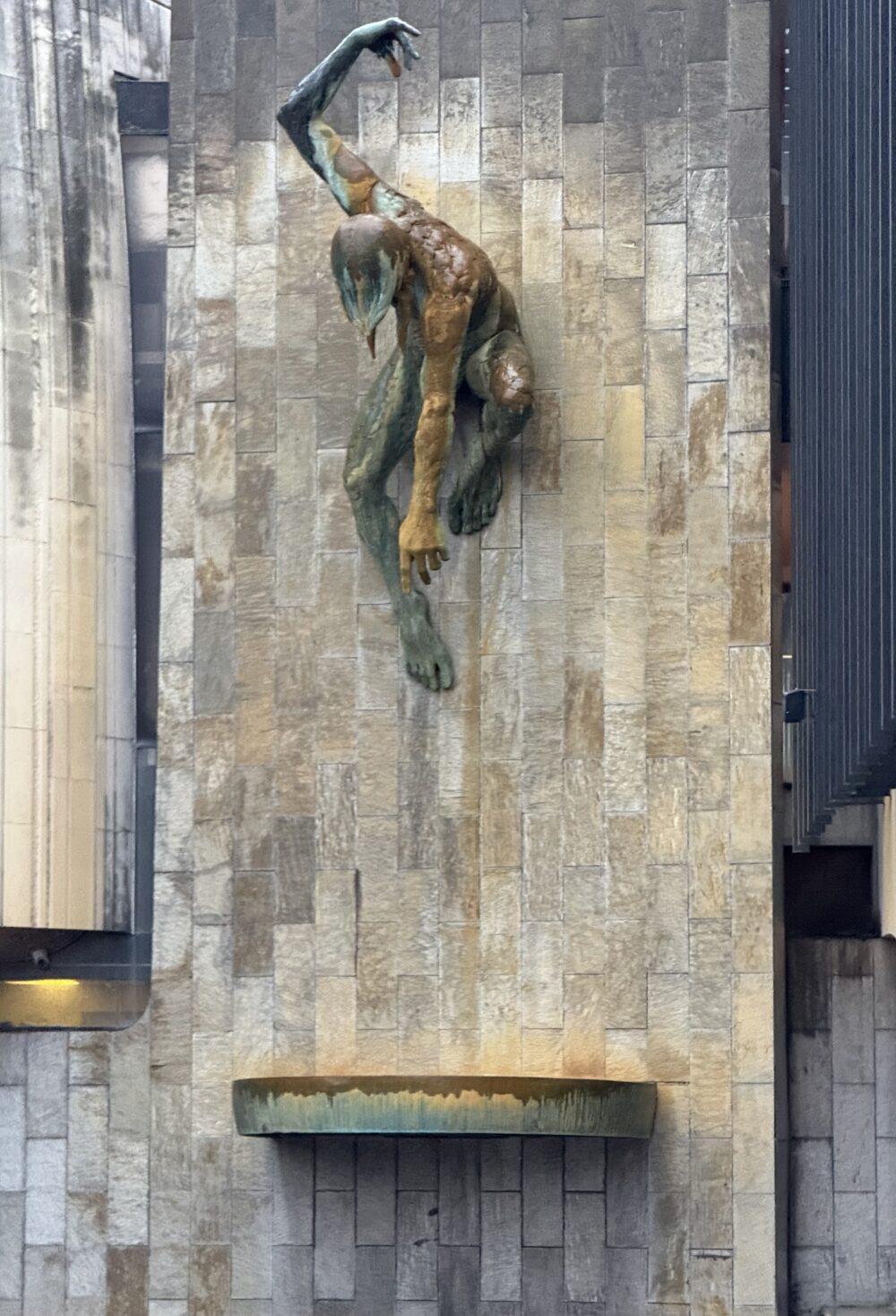
This is the River God Tyne on the wall of Newcastle’s Civic Centre. It was the largest bronze sculpture in the UK when it was installed in 1968 and the artist was David Wynne (he of the nearby swans).
Occasionally, water trickles from his outstretched hand, over his head, and into that little collecting pool (but mostly splashing out of it and all over the place—which, I assume, is why it’s normally turned off).
This post was filed under: Art, Photos, David Wynne, Newcastle upon Tyne.
1080—1980
When I told you that there were twelve mosaics under the A1058 in Newcastle, you may have had one of two thoughts:
- Aren’t there fourteen? Why yes, that was poorly fact-checked.
- Does this mean 13 more posts featuring photographs of grimy 1970s mosaics from a dodgy underpass? I can neither confirm nor deny, but this post might give you a clue.
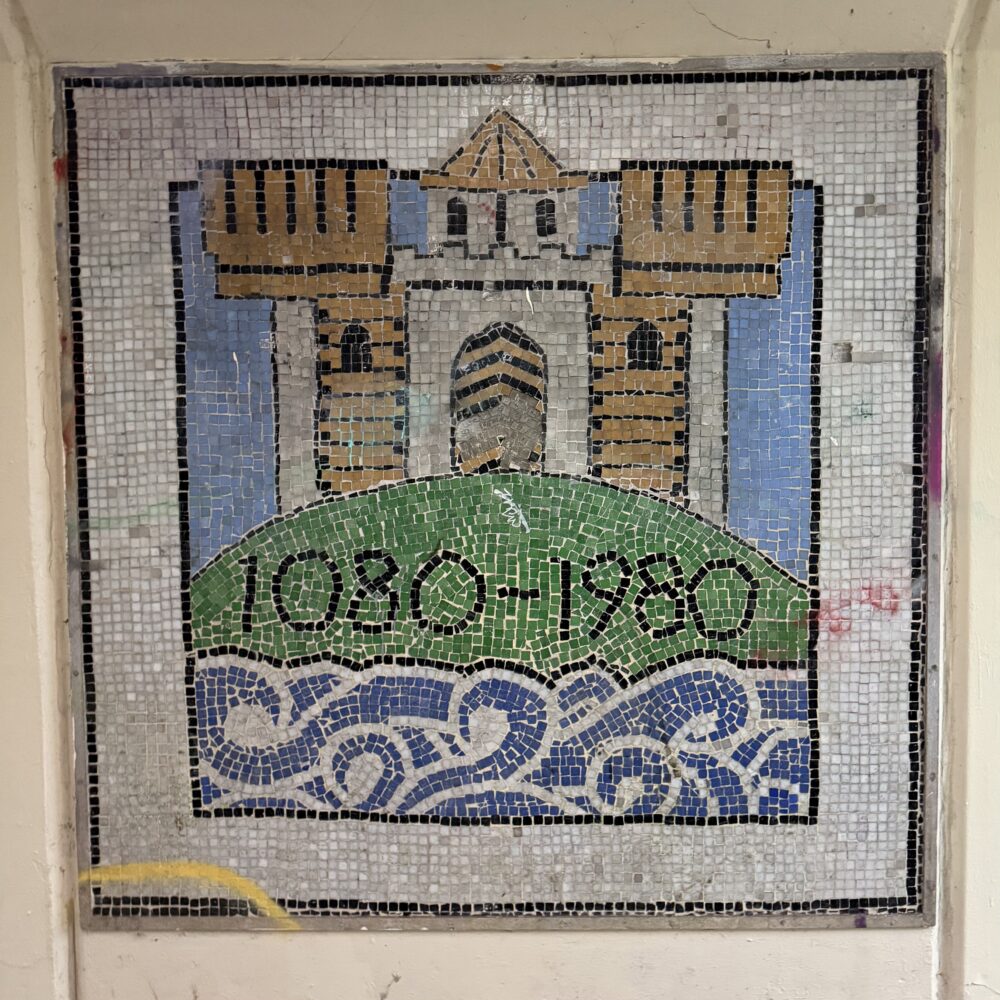
This post was filed under: Art, Photos, Newcastle upon Tyne.
New Metro, old problems
Deep beneath the A1058 in Newcastle lies a subway decorated with twelve mosaics. These were installed in 1979 in anticipation of the 900th anniversary of the city’s founding, celebrated the following year.
Each panel was chosen to represent a key event in the history of the city. With a little foresight, they included the opening of the Metro as one of those seminal moments:
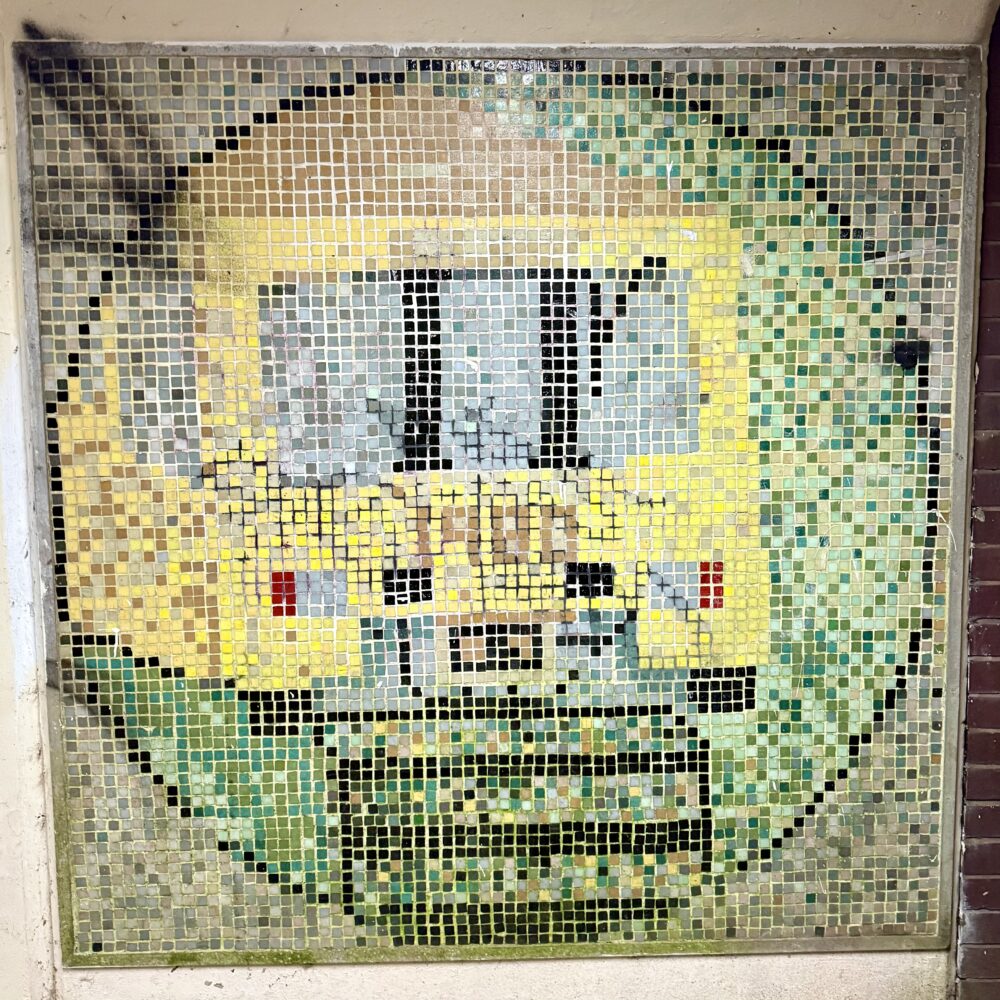
The trains captured in that image have trundled round the system continuously since it opened… but not for much longer. Yesterday, the first of a new generation of Metro trains entered passenger service. Perhaps someone, somewhere is making mosaic to celebrate.
It’s a sign of the times that the new train is having to trundle under Gateshead at a reduced speed due to the risk of collapse of the crumbling Gateshead flyover. Small steps forward are always welcome, but with the UK’s public realm and infrastructure suffering from long term under-investment, it looks like we’ll be stuck with cascading sets of problems for years to come.
This post was filed under: Art, Photos, Metro, Newcastle upon Tyne, Public Transport.
Moonlight

I’m very lucky to be able to walk to work… but walking to work by the light of the moon is a bit of a downer. Not as much of a downer as the alternatives, but a downer nonetheless.
Even with the solstice on Saturday, there’s a little while longer to go until the sunrise begins to get a little earlier.
This post was filed under: Photos, Newcastle upon Tyne.
